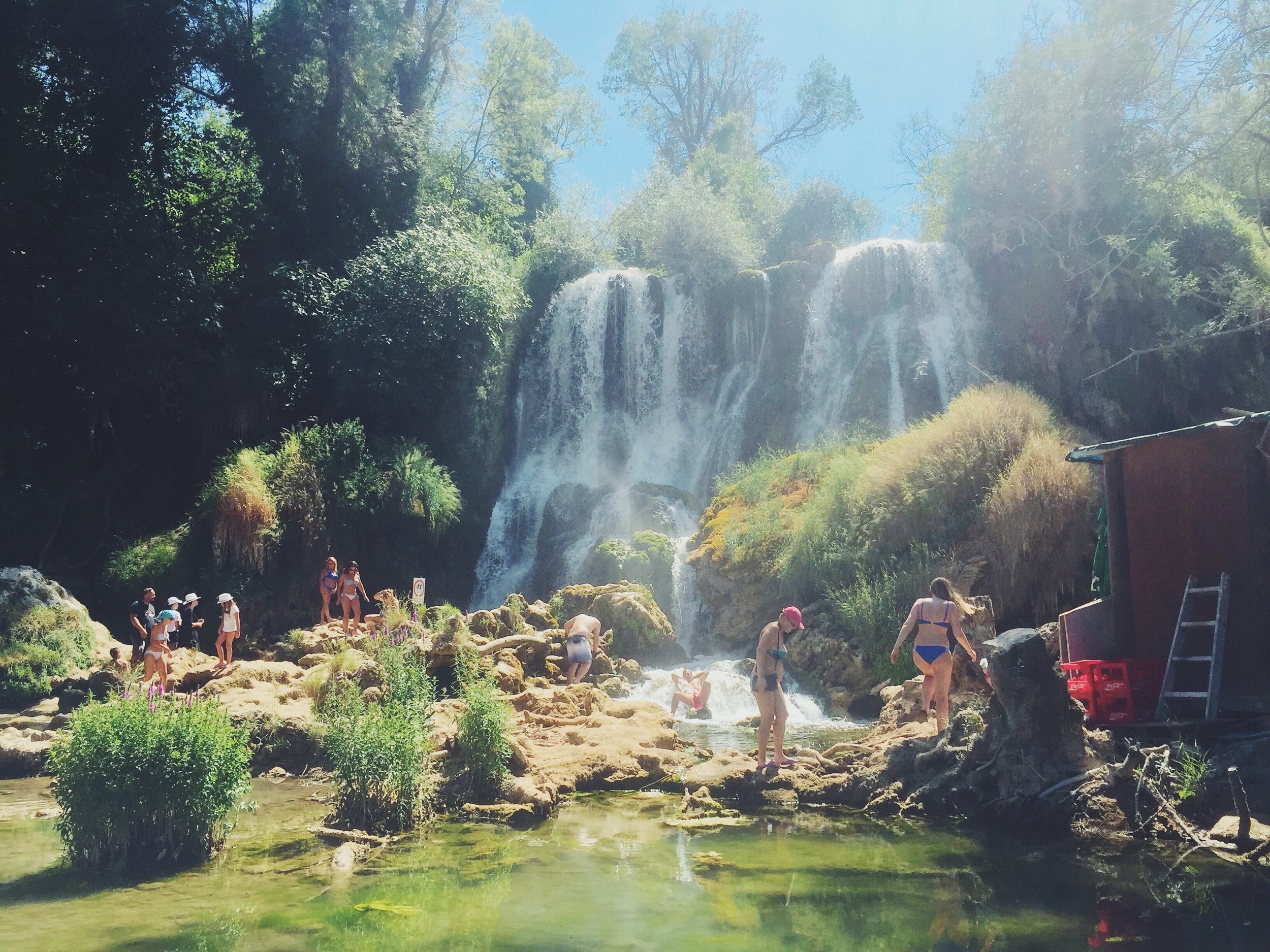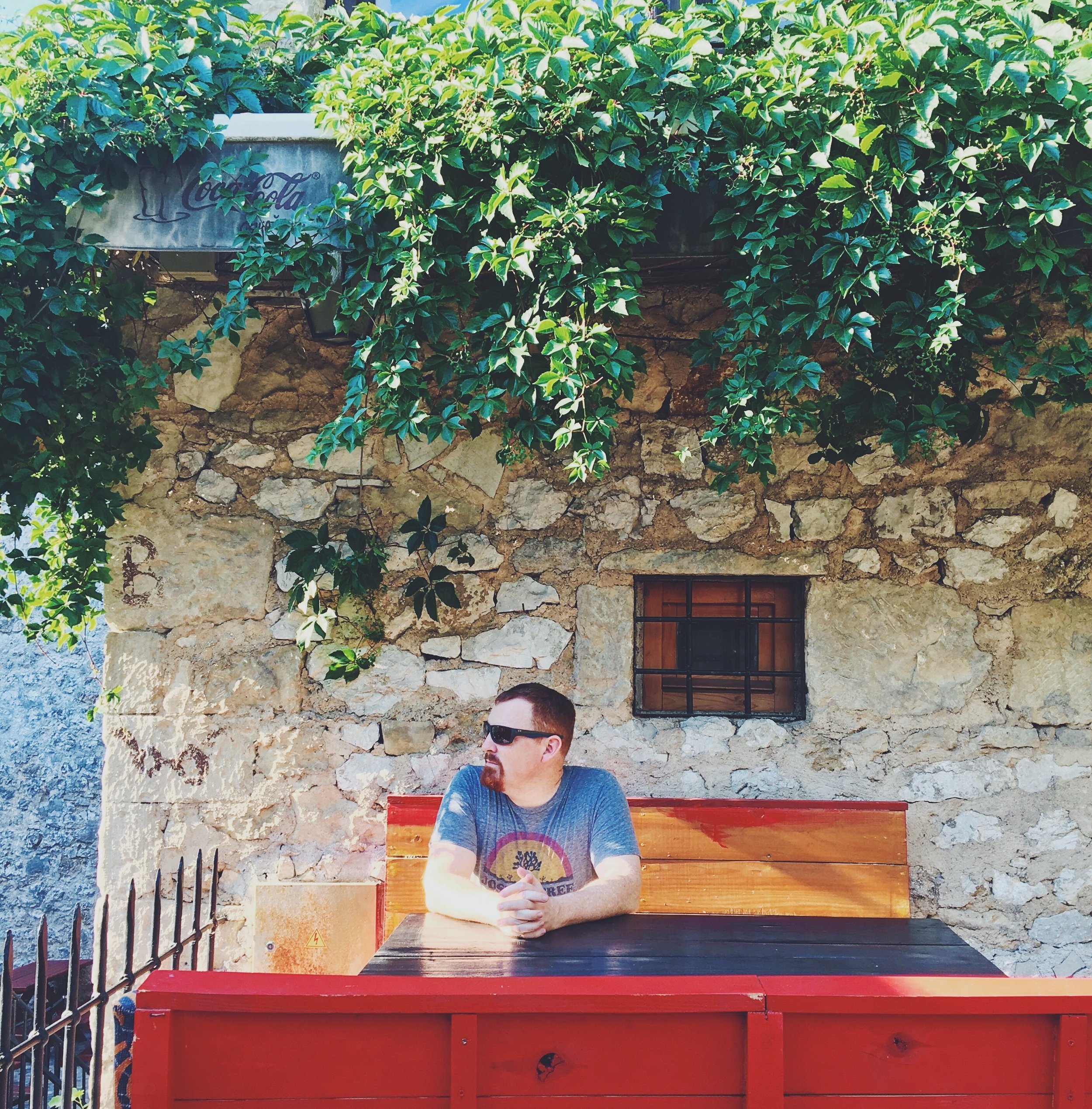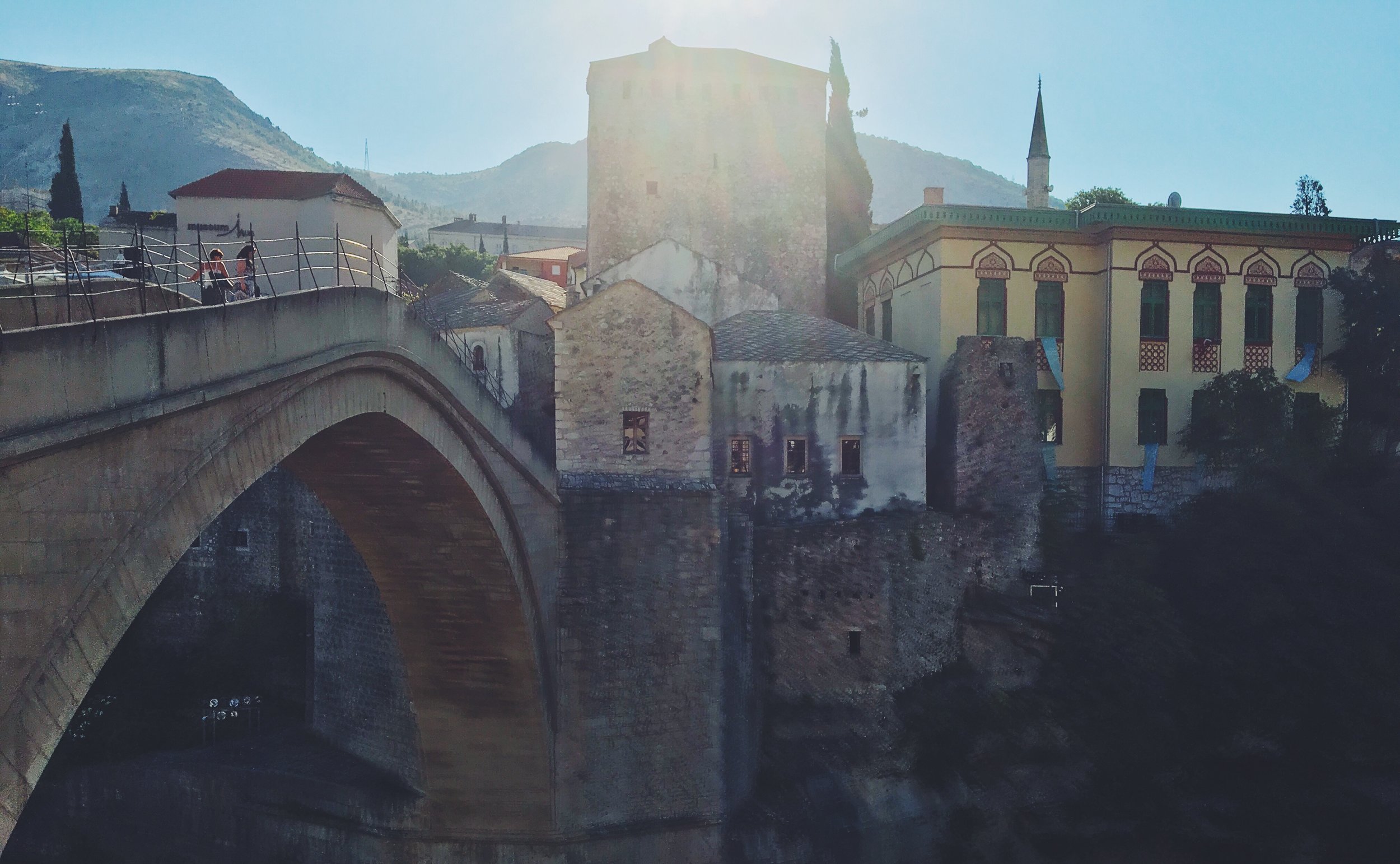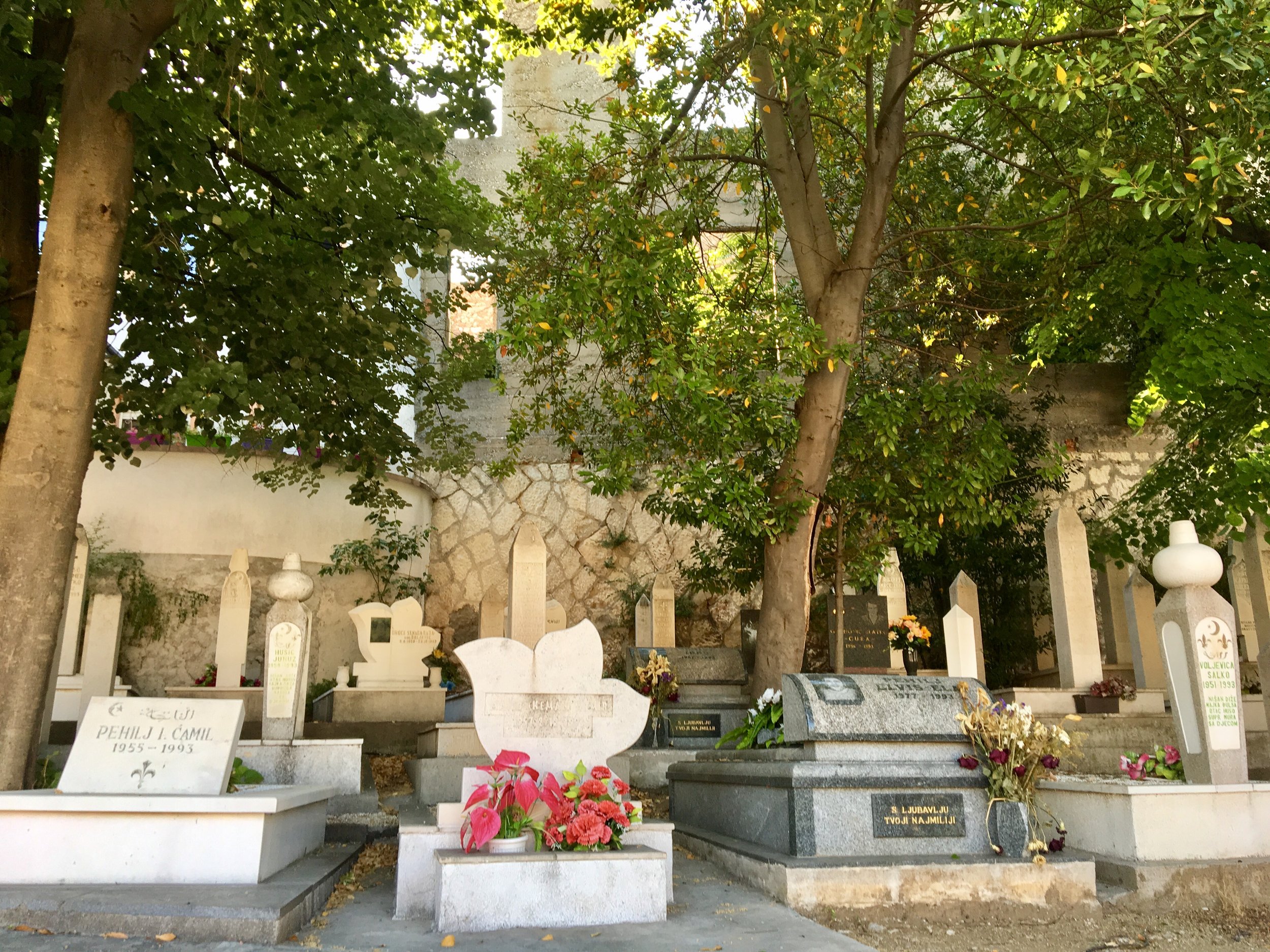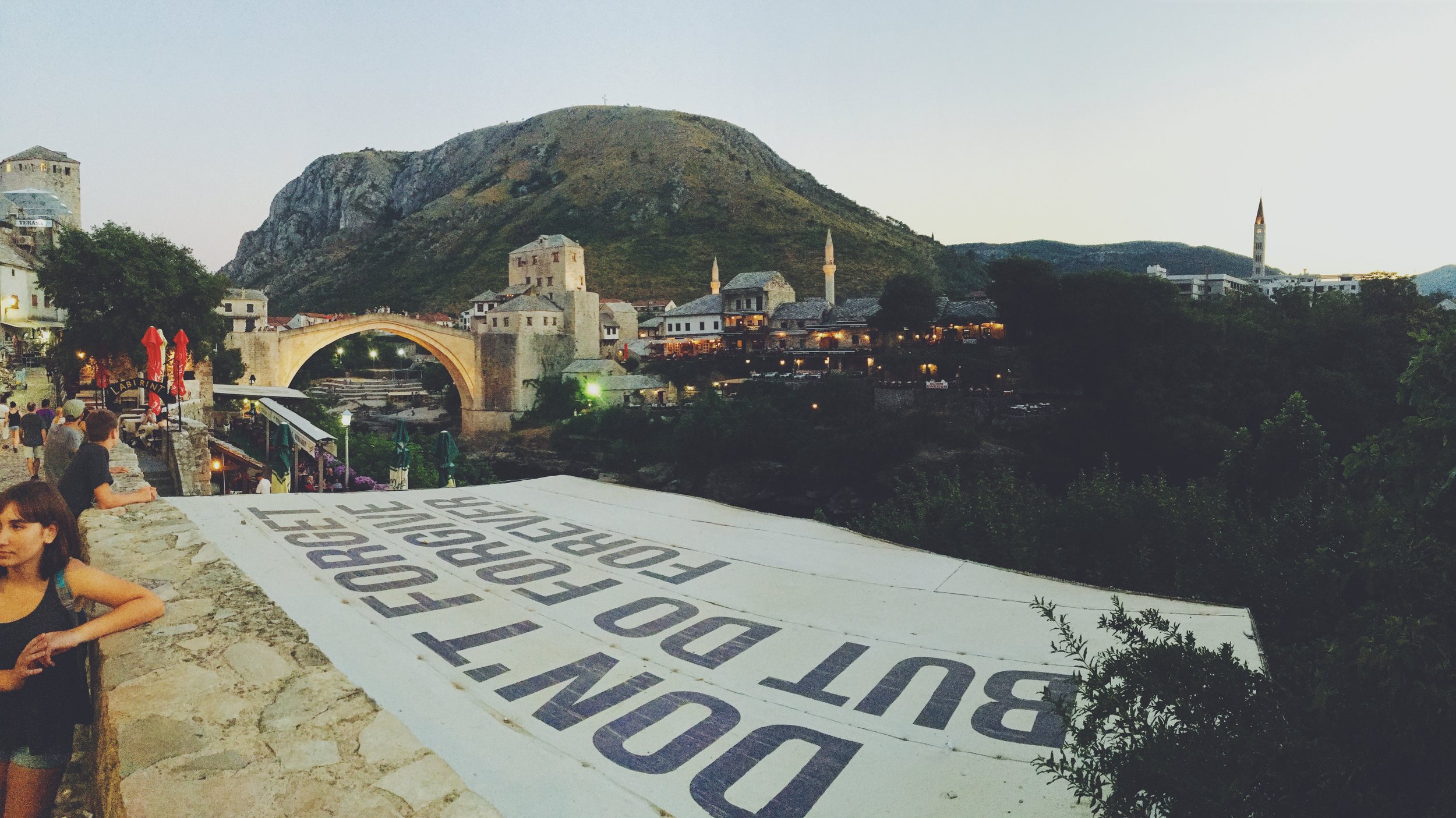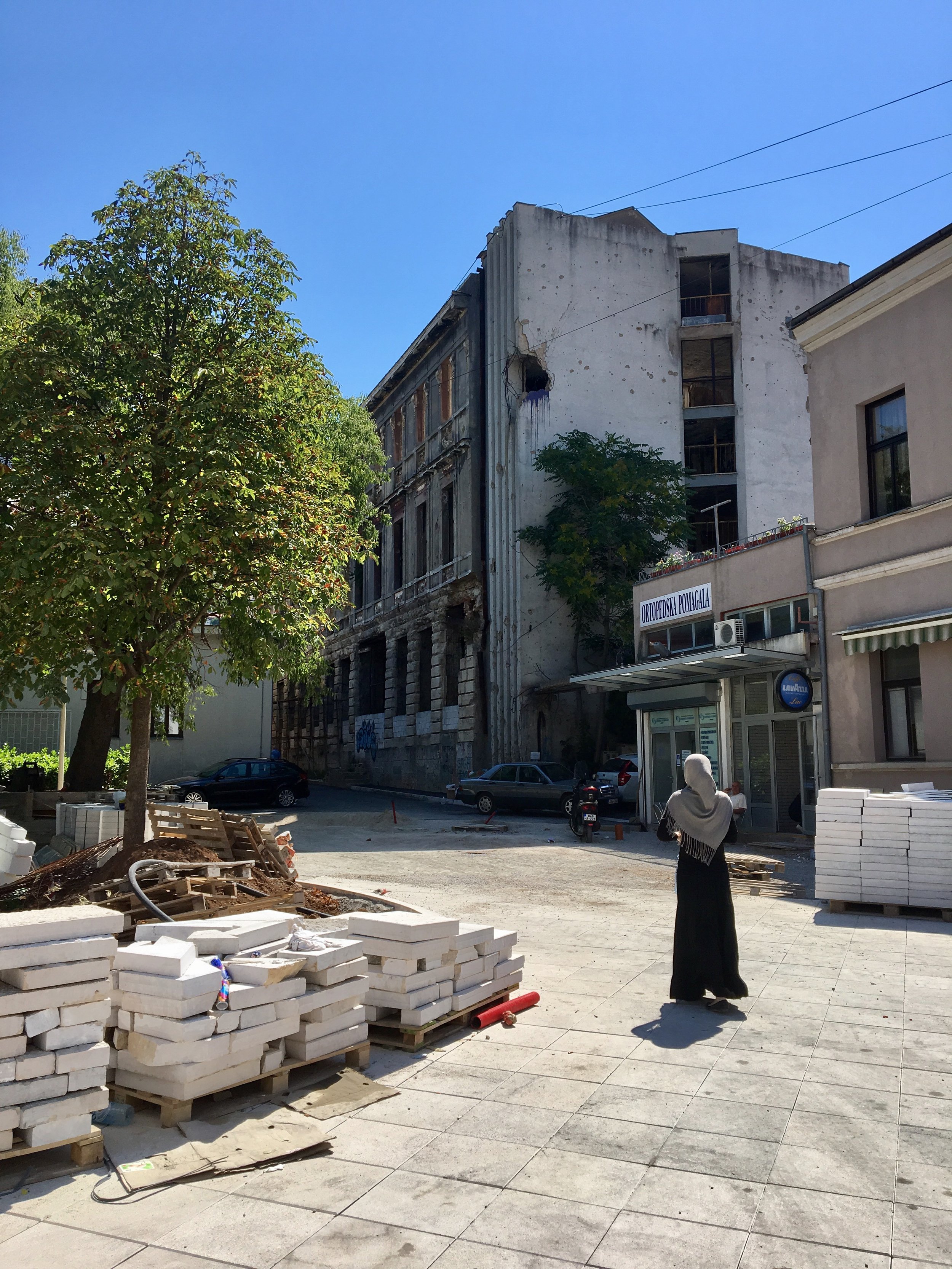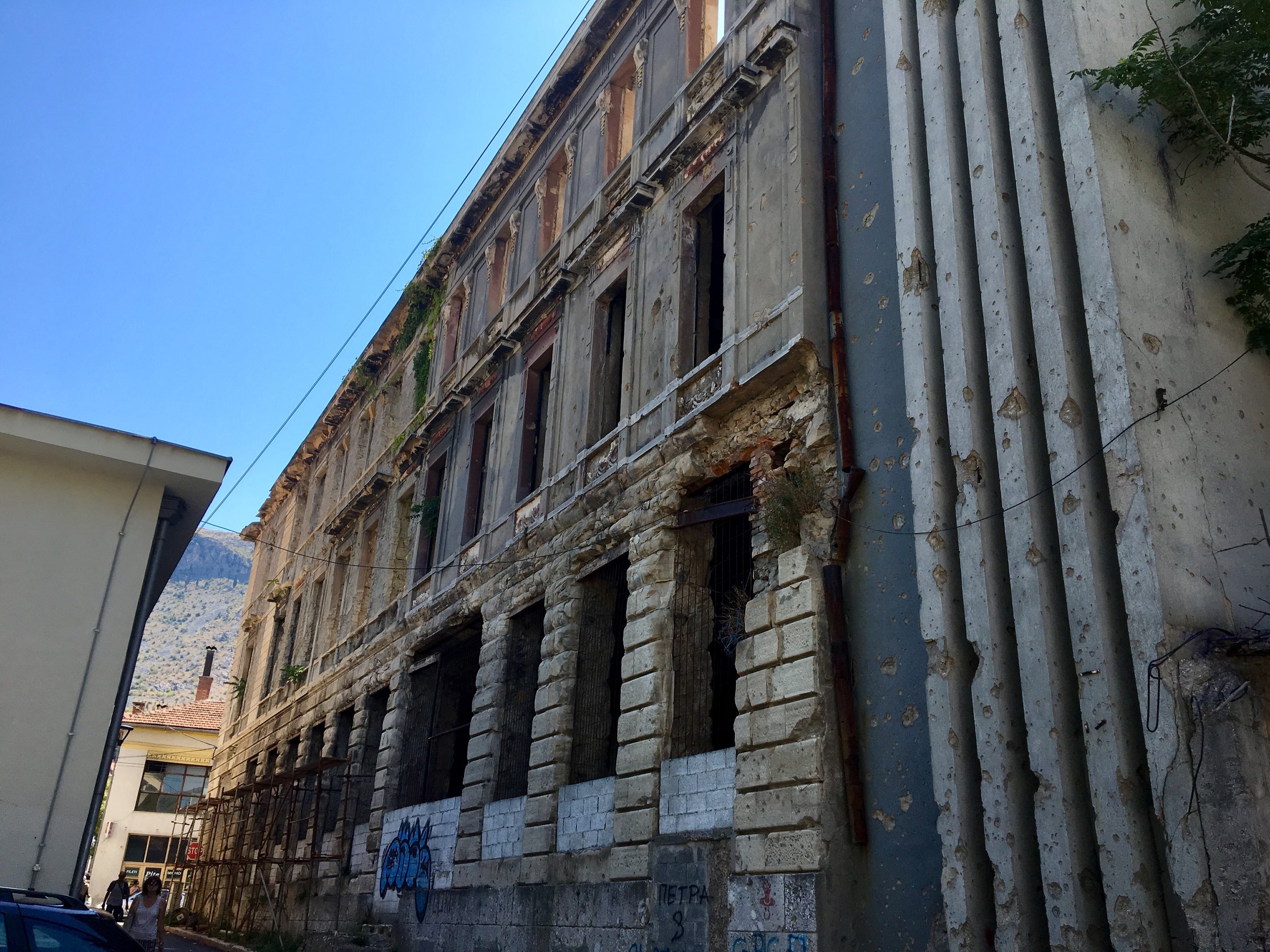MOSTAR
Next stop, Bosnia. We drove north from Dubrovnik, through the beautiful scenery along the Croatia coast (even catching a glimpse of the ancient Wall of Ston!), crossing the border into Bosnia at Nova Sela. From there, we traveled on to Kravica Falls, an incredible set of waterfalls and swimming area along the Trebižat River. The park at Kravica is well equipped for tourists and has restrooms, food and drink vendors, even an openair trolley that shuttles less-mobile visitors down the hill to the falls from the parking area. Entry to the falls is 4 KM ($2.50 USD). Kravica's large swimming lake is ringed by massive cascades that thunder down into natural grottos around its edge. The water is clean and cold and constantly moving. It was the perfect road break on a hot, summer day before pushing on to Mostar ...
Na Putu za Mostar | The Road to Mostar
The further we drove into Bosnia, the more obnoxiously we gaped. The landscape turned lush and dramatic; sharp mountains stabbed into the clouds behind layers of green hills. Towns perched in verdant folds of farmland, canyons towered, rivers became lakes. Bosnia captured our imaginations early on. Our hearts would not be far behind.
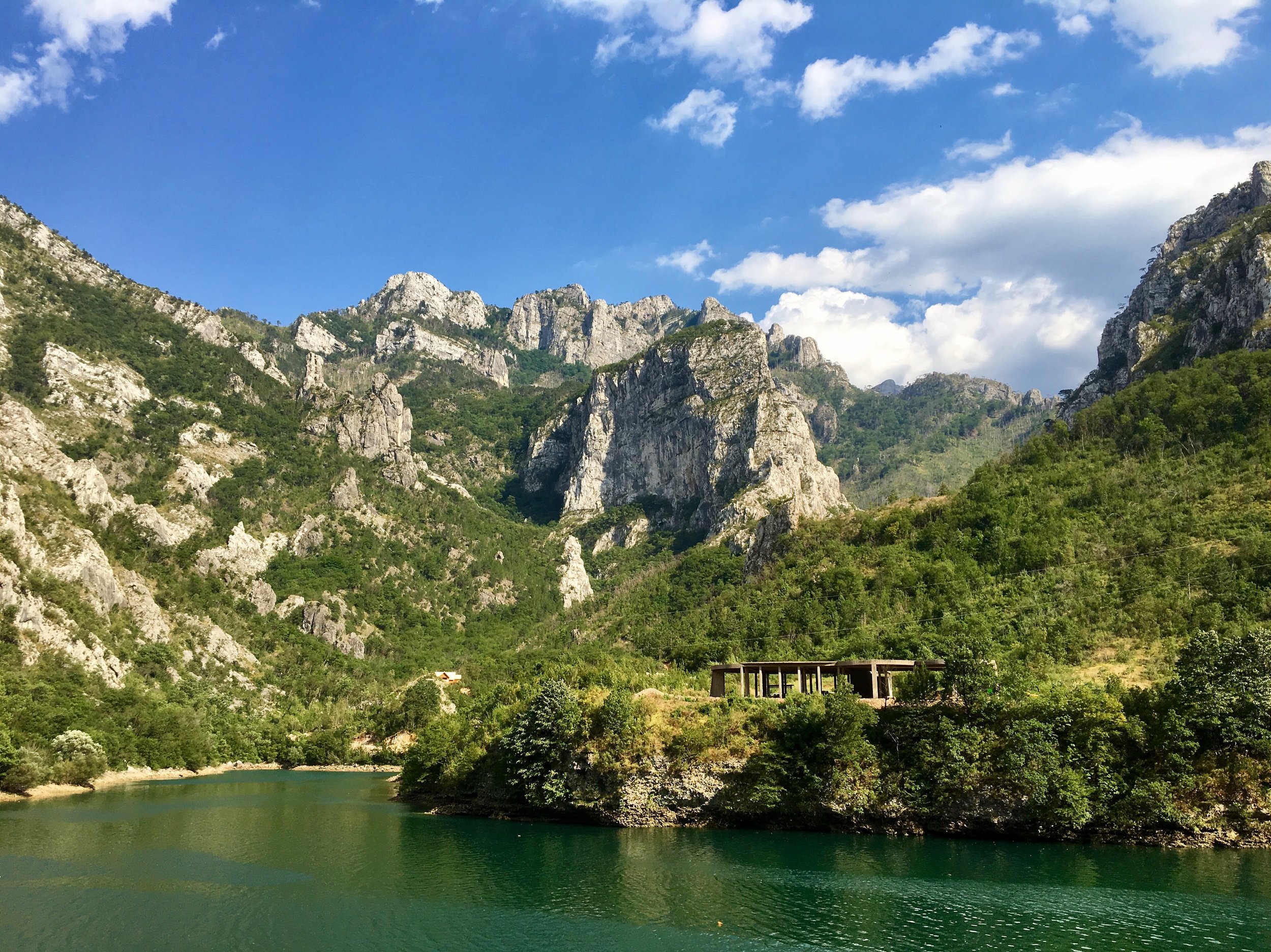
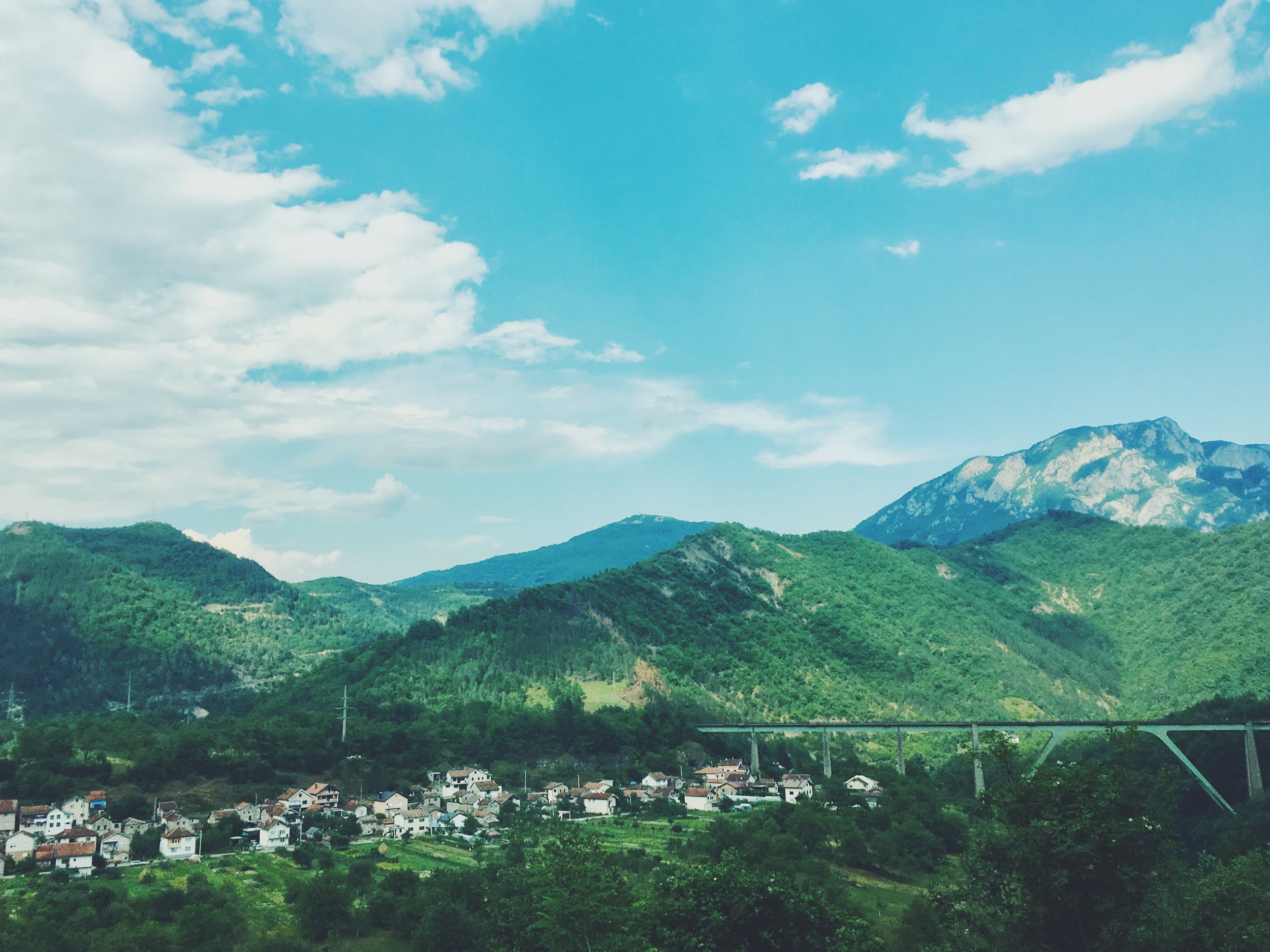
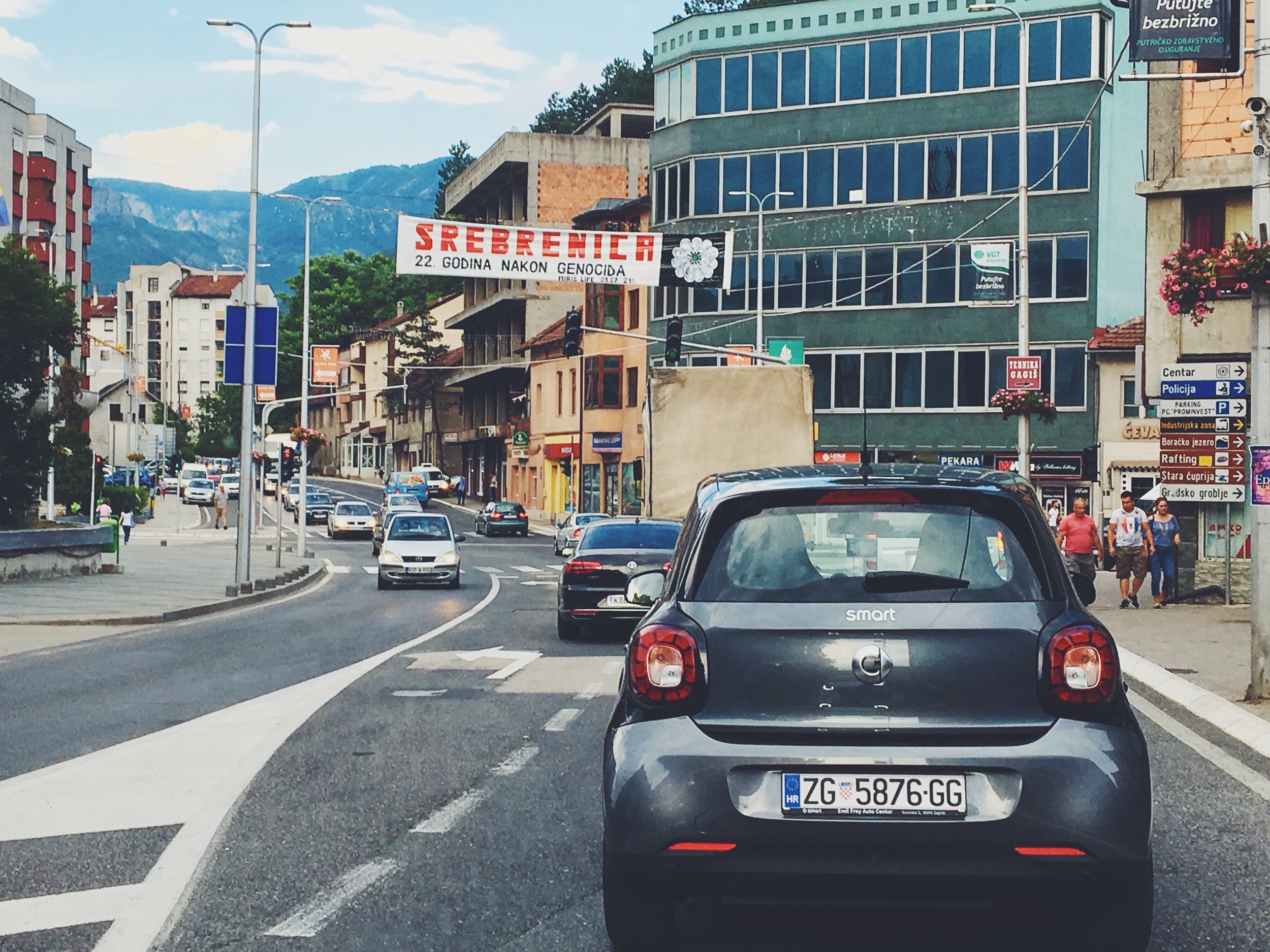

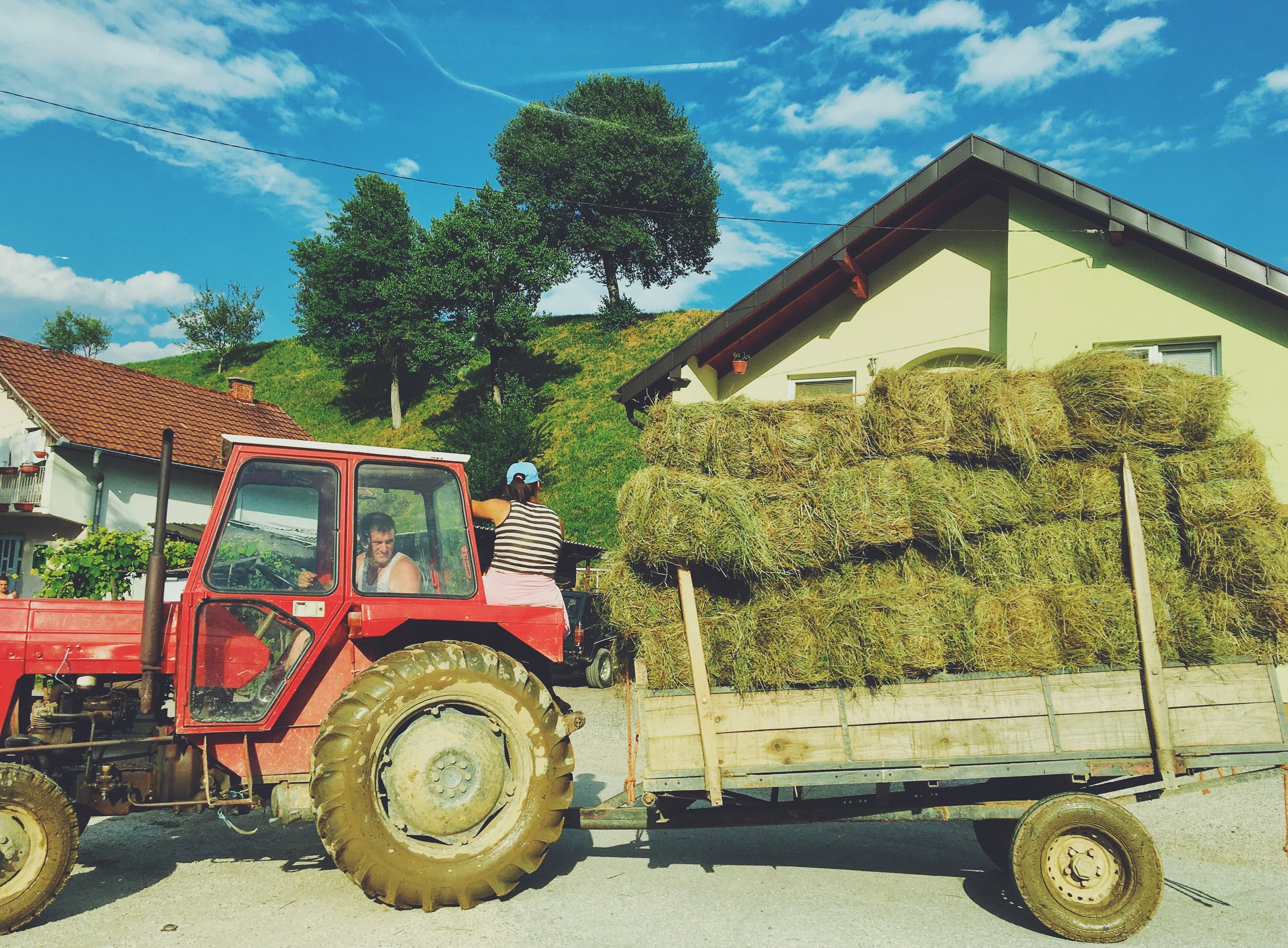
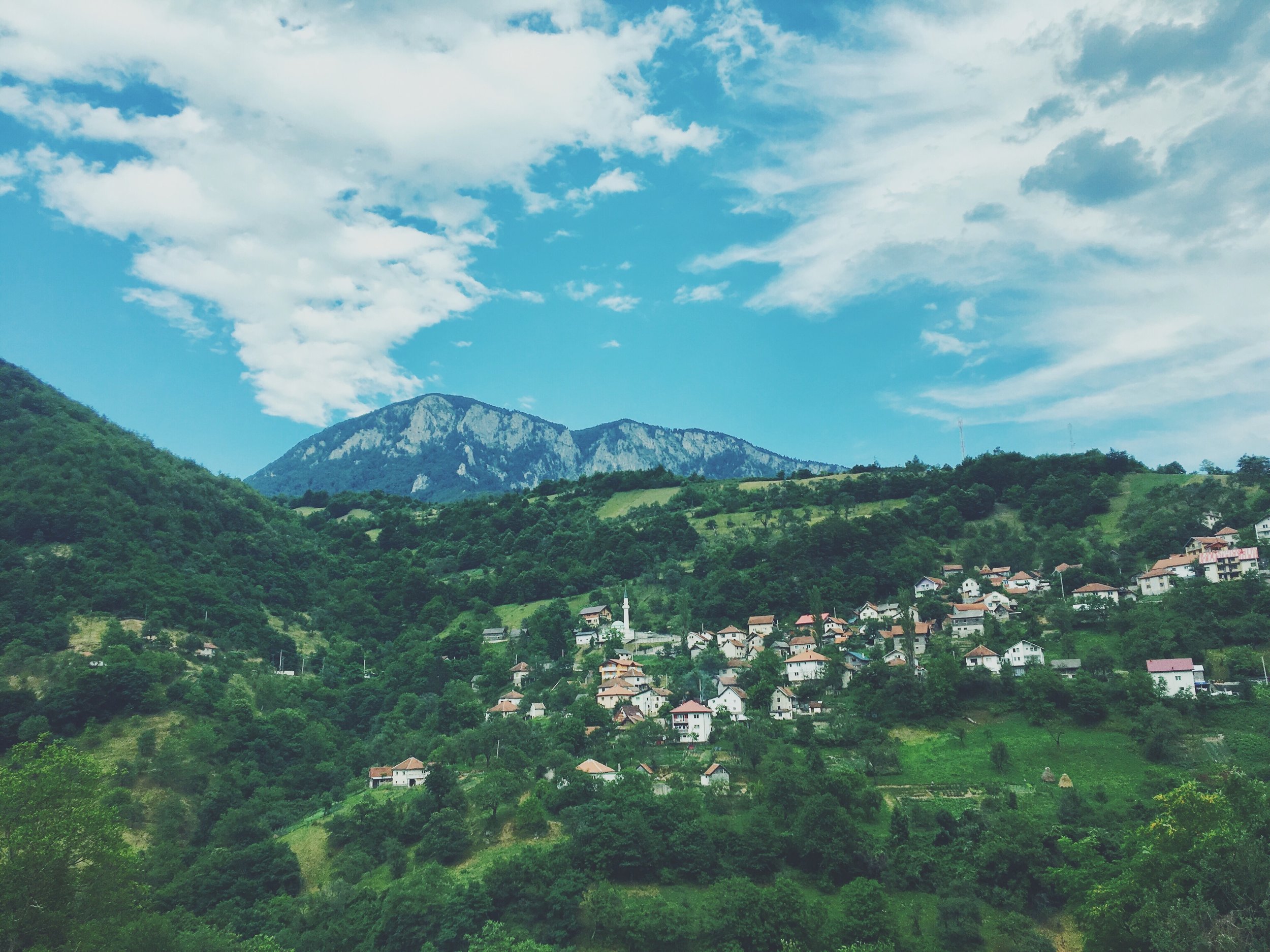
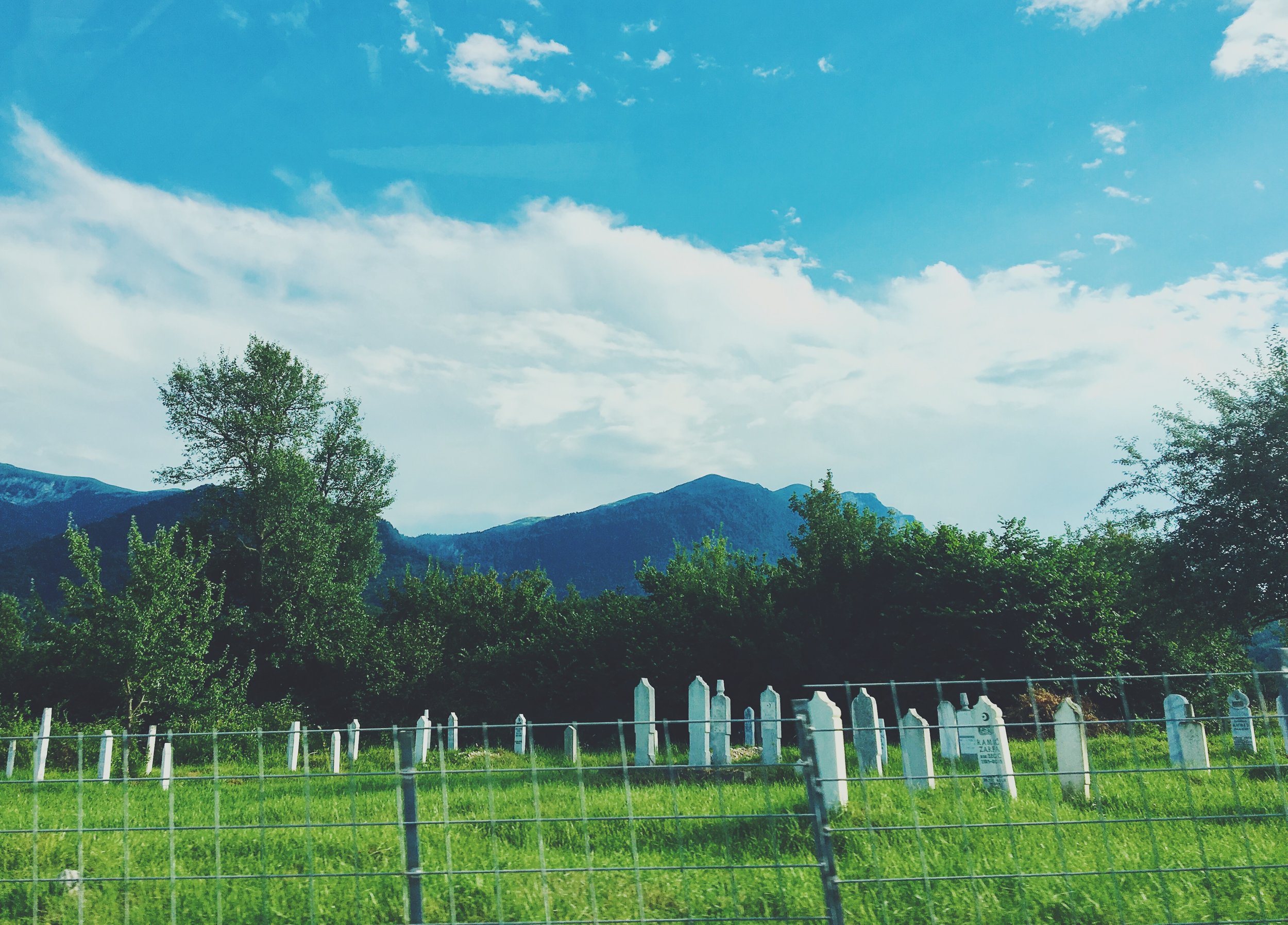
U Starom Gradu | In the Old City
Mostar's Old Town is a little bubble of magic nestled in a bustling, modern city. It isn't large, but for what it lacks in size it offers in character. The views aren't half bad either—it flanks the historic Stari Most (bridge) and has the winding, cobblestone feel of a fairytale. Shop owners are friendly, anxious to chat (and bargain). Everything is available, from regional jewelry, antiquities and lamps to traditional rugs and locally-made clothes. All this, amid a healthy crop of eateries, bars and riverside coffee shops. The Old City makes for a full half-day (if not more) of exploring and Bosnian Mark-dropping. Tip: it's *cash only* so stop by an ATM before you go. If you're stuck with large bills, stop by the Tourist center (north side of the Stari Most bridge) to exchange them for smaller ones.
Near the entrance to the Old City, we purchased a pair of hand-hammered silver plates ("Tournament", left and "The Hunt", right) in Mostar's old city. The artisan chooses his designs from 11th-century Bosnian grave stones and hammers them into the plates by hand. Before we left, he proudly presented us with souvenir—a 1000 Yugoslav Dinar note bearing Nikolai Tesla's likeness. It was, as he said, "a keepsake of old money from his country so that we might remember Bosnia".
The Stari Most bridge (below) was built by the Ottomans in the 16th century. It stood for 427 years before it was destroyed during the Croat-Bosnian War in 1993 and was rebuilt in 2004. A beautiful feat of engineering and an icon of post-war resilience, the bridge connects two sides of Mostar's lively Old Town and is free to walk across. Tip: visit early in the AM (before 8) for a peaceful, crowd-less experience. Stop to linger over a pastry and Bosnian coffee at one of the many pekaras along the way.
Many of the buildings in Mostar that were devastated during the Croat-Bosnian Conflict have been purposely left in their ruined state as reminders of the war.
My niece, Emily at the table in our apartment in Mostar where we enjoyed a breakfast bounty of local melons, apricots, peaches, grapes, raspberries and pastries from the pekara (bakery) along with homemade fruit spreads from a roadside stand.
`


